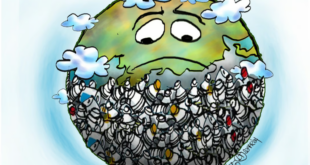
MUCH has been made of the Philippines’ “demographic dividend,” its young and growing population, in recent years, but strategies and policies to maximize this assumed advantage have tended to be long on self-congratulations and short on actionable details. A recent analysis by The Economist, however, should compel our policymakers to sharpen their focus on using the Philippines’ increasingly unique population characteristics for the country’s benefit.
The Economist explains, “In the roughly 250 years since the Industrial Revolution the world’s population, like its wealth, has exploded. Before the end of this century, however, the number of people on the planet could shrink for the first time since the Black Death,” the pandemic of bubonic plague in the mid-14th century that is thought to have wiped out about one-fourth of Earth’s population, and as much as half of Europe’s.
The reason for the potential decline in Earth’s population is not excessive mortality, but rather a steady decline in the world’s fertility rate. The Economist explains that the fertility rate in 2000 was 2.7 births per woman, but has fallen to 2.3 today, and continues to decline. This puts it perilously close to the “replacement rate” of 2.1, the rate at which a population has to increase to compensate for deaths and thus remain stable. Obviously, fertility rates vary from country to country, but the overall world rate is dropping, and what is most worrisome is that the 15 biggest countries by gross domestic product (GDP) all have a fertility rate below the replacement rate. The Economist notes the problem also affects the two largest countries by population, China and India.
Although the Philippines’ fertility rate has declined over the past several years, it has done so at a much slower rate than the world average, and is still well above that average at 2.45 according to UN data. The Philippines currently has a population growth rate of 1.54 percent, faster than the world growth rate of 0.88 percent. The median age of the Philippines’ population is just 25.7 years, whereas the world’s median age is about 31 years, up from 26.1 years at the beginning of this century.
The Economist analysis points out a few obvious and potentially disastrous problems that can result from an aging, declining population. Economies can be adversely affected by shrinking workforces and declining productivity. Consumer spending also declines as populations get older, with more spending directed to sectors with lesser added value for the overall economy, such as health care, and away from education. Aging societies are also much less innovative than younger ones, which can lead to economic stagnation.
The Philippines is not the only country with the so-called demographic dividend, but in contrast to most others has the advantage of being more economically robust; poverty and income inequality are still problems, but they are steadily being reduced as the country moves toward middle-income economic status. Our young population that is growing at a stable rate — the growth rate could even decline a bit without reducing the demographic dividend — can fill in the gaps that are being left by aging, shrinking populations elsewhere.
Doing that, however, requires policies and strategies that aim higher than simply promoting the Philippine population as ready replacements for shrinking workforces elsewhere, which unfortunately is the current limit of policy thinking. Overseas Filipino workers, and those who fill a similar role without leaving the country, such as workers in the business process outsourcing (BPO) sector, are of course extremely valuable and a critical pillar of our economy.
We should, however, be reinvesting the windfall of earnings and experience from OFWs into filling the other voids left by aging populations, building our industrial productivity and our innovation sectors, and improving our human capital by investing far more in education. Policies that address those objectives will turn the Philippines into the country to turn to in order to get things done, as well as stop the “brain drain” that has been a drag on the country’s growth for decades. The time to make the commitment to maximizing our demographic dividend is now — after all, we won’t be young forever.
*****
Credit belongs to : www.manilatimes.net
 Atin Ito First Filipino Community Newspaper in Ontario
Atin Ito First Filipino Community Newspaper in Ontario






